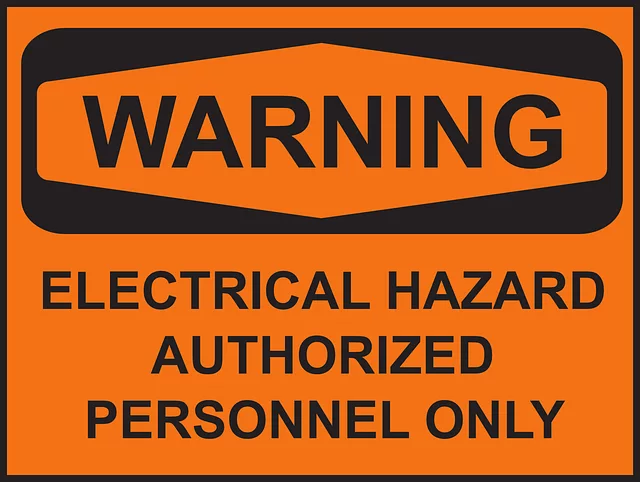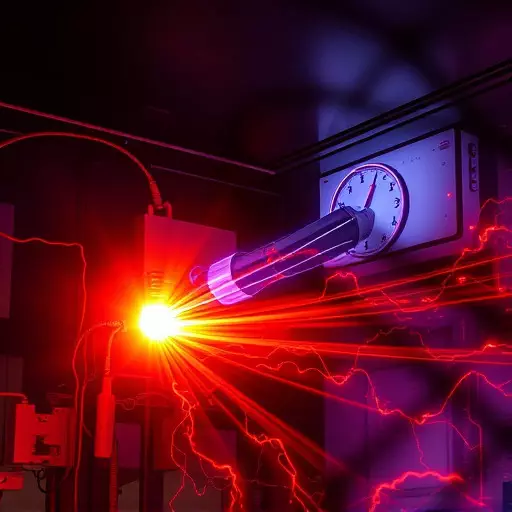Single-line diagrams (SLDs) are visual tools that simplify complex electrical systems for easier understanding and communication. Paired with arc flash hazard analysis, SLDs represent wiring configurations using symbols, highlighting components, circuits, and potential hazards. They are crucial for electricians, maintenance workers, and safety officers to ensure compliance and implement risk reduction strategies, such as selecting appropriate PPE, improving system design, and enhancing training. Regularly maintained SLDs help identify hidden hazards like improper wiring or outdated equipment, enabling targeted arc flash risk mitigation. Case studies from various industries demonstrate their effectiveness in reducing arc flash incidents, fostering safer working environments and adhering to electrical safety standards.
In today’s industrial landscape, understanding electrical systems is paramount for safety and efficiency. Single-line diagrams (SLDs) serve as essential visual guides, simplifying complex electrical networks into intuitive, easy-to-understand representations. This article delves into the critical role of SLDs in managing arc flash hazards—a leading cause of workplace injuries and fatalities. We explore their application in risk mitigation, enhancing electrical safety compliance, uncovering hidden dangers, and providing best practices for maintenance. Case studies demonstrate successful arc flash risk reduction through effective diagramming strategies.
- Understanding Single-Line Diagrams: A Visual Guide to Electrical Systems
- Arc Flash Hazard Analysis: Identifying Risks and Potential Dangers
- The Role of Single-Line Diagrams in Risk Mitigation Strategies
- Enhancing Electrical Safety Compliance with Visual Representation
- Uncovering Hidden Hazards: Insights from Single-Line Diagram Reviews
- Best Practices for Maintaining and Updating Single-Line Diagrams
- Case Studies: Success Stories in Arc Flash Risk Reduction through Diagramming
Understanding Single-Line Diagrams: A Visual Guide to Electrical Systems

Single-line diagrams (SLDs) are a powerful visual tool for understanding and communicating complex electrical systems. Often used in conjunction with arc flash hazard analysis, these diagrams simplify intricate wiring configurations into a single line, representing each component as a symbol. This accessibility makes SLDs invaluable for electricians, maintenance personnel, and safety officers striving to ensure electrical safety compliance.
By presenting a clear, simplified view of an electrical system, SLDs facilitate effective arc flash risk reduction strategies. They allow for quick identification of components, circuits, and potential hazards, enabling professionals to conduct thorough assessments and implement necessary precautions. Whether navigating a large industrial facility or a smaller commercial space, single-line diagrams serve as a go-to guide for maintaining and ensuring the safety of electrical systems, ultimately mitigating risks associated with arc flash incidents.
Arc Flash Hazard Analysis: Identifying Risks and Potential Dangers
Arc Flash Hazard Analysis plays a pivotal role in identifying and mitigating risks associated with electrical systems. By meticulously evaluating equipment, processes, and personnel interactions, organizations can pinpoint potential arc flash dangers. This analysis involves assessing factors like voltage, current, and distance to determine the energy released during an arc event, enabling targeted safety measures.
Effective arc flash risk reduction strategies are essential for maintaining electrical safety compliance. Implementing appropriate personal protective equipment (PPE), improving system design, and enhancing training programs significantly contribute to mitigating risks. Such proactive steps not only protect workers but also ensure operational continuity by minimizing the potential for severe injuries or fatalities caused by arc flashes.
The Role of Single-Line Diagrams in Risk Mitigation Strategies

Single-line diagrams (SLDs) play a pivotal role in developing comprehensive risk mitigation strategies, especially in the context of electrical systems and arc flash hazard analysis. These diagrams provide a simplified visual representation of an electrical network, making it easier to identify potential hazards and assess risks. By mapping out circuit components and connections, SLDs help professionals pinpoint areas susceptible to arc flashes, which can result in severe injuries or property damage.
Through meticulous SLD analysis, engineers and safety specialists can implement effective arc flash risk reduction measures. This includes selecting appropriate protective equipment, designing safe work practices, and ensuring electrical safety compliance. By utilizing SLDs as a foundational tool, organizations can proactively manage risks associated with high-energy electrical systems, ultimately fostering a safer working environment for personnel and adhering to industry standards.
Enhancing Electrical Safety Compliance with Visual Representation

In today’s industrial landscapes, electrical systems are complex and interconnected, making it crucial to have a clear visual representation for effective management. Single-line diagrams (SLDs) serve as powerful tools that simplify the understanding of an electrical system’s intricacies. By presenting a simplified, graphical layout, SLDs enhance electrical safety compliance by facilitating comprehensive arc flash hazard analyses. This visual approach allows professionals to swiftly identify potential risks and implement strategies for arc flash risk reduction, ensuring a safer working environment.
Moreover, these diagrams enable systematic maintenance planning and troubleshooting processes. With all critical components laid out, electrical engineers can conduct thorough risk assessments, develop informed safety protocols, and train personnel accordingly. This proactive measure not only mitigates the likelihood of accidents but also ensures adherence to stringent industry standards, fostering a culture of robust electrical safety compliance.
Uncovering Hidden Hazards: Insights from Single-Line Diagram Reviews

Single-line diagrams (SLDs) play a pivotal role in uncovering hidden hazards within electrical systems. During routine reviews, these detailed schematics allow for a comprehensive understanding of circuit configurations and potential risks. By analyzing each component, including connections, ratings, and clearances, professionals can identify areas prone to arc flash hazard analysis. These insights enable targeted strategies for arc flash risk reduction, ensuring electrical safety compliance.
Through SLD reviews, hidden dangers often emerge, such as improper wiring, excessive current loads, or outdated equipment. By addressing these issues proactively, organizations can significantly mitigate the risks associated with electrical systems. This process promotes a culture of safety and helps maintain adherence to industry standards, ultimately safeguarding personnel and facilities from potential disasters.
Best Practices for Maintaining and Updating Single-Line Diagrams

Maintaining and updating single-line diagrams (SLDs) is crucial for ensuring electrical safety compliance and effective arc flash risk reduction. Best practices involve regular reviews to reflect any changes in the system, including new equipment installations or modifications. Utilize specialized software that allows for easy updates and accurate representations of the electrical network. This digital approach facilitates collaboration among stakeholders, enhances documentation, and ensures everyone works with the latest diagram version.
Furthermore, incorporate detailed information such as component ratings, protection devices, and control logic into the SLDs. These additions enable a comprehensive arc flash hazard analysis, enabling engineers to accurately assess risks and implement necessary mitigation strategies. Regular maintenance also includes checking for consistency with actual system wiring and equipment locations, thereby minimizing errors that could compromise electrical safety.
Case Studies: Success Stories in Arc Flash Risk Reduction through Diagramming

In many industries, arc flash hazards pose a significant threat to workers’ safety, often leading to severe injuries and even fatalities. However, successful implementations of single-line diagrams have emerged as powerful tools in mitigating these risks. These visual representations simplify complex electrical systems, making it easier for professionals to identify potential arc flash hazard sources and implement effective control measures.
Case studies from various sectors highlight the impact of single-line diagramming on arc flash risk reduction. For instance, a study in a manufacturing facility revealed that by analyzing the electrical layout using these diagrams, engineers were able to reconfigure circuit breakers and grounding systems, significantly lowering the potential for explosive arc flashes. Similarly, a power plant improved its electrical safety compliance through detailed diagramming, ensuring that all high-risk areas were identified and properly protected with appropriate personal protective equipment (PPE) and engineering controls. These success stories underscore the value of single-line diagrams in proactive arc flash hazard analysis and the subsequent implementation of risk reduction strategies, ultimately fostering a safer working environment.


